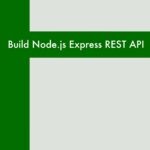Introduction:
Node.js has emerged as a powerful and popular runtime environment for building server-side applications. Whether you are a budding developer or someone looking to expand their skills, understanding Node.js basics is essential. In this beginner-friendly guide, we’ll explore the fundamentals of Node.js with practical examples to help you get started on your journey into server-side JavaScript.
What is Node.js?
Node.js is an open-source, cross-platform JavaScript runtime built on Chrome’s V8 JavaScript engine. It allows developers to execute JavaScript code on the server side, enabling the development of scalable and high-performance web applications. One of the key features of Node.js is its non-blocking, event-driven architecture, making it efficient for handling concurrent connections.
Setting Up Node.js:
Before diving into examples, you need to have Node.js installed on your machine. Visit the official Node.js website (https://nodejs.org/) and download the appropriate version for your operating system. Once installed, you can verify the installation by running the following commands in your terminal or command prompt:
node -v
npm -vThese commands should display the installed Node.js version and npm (Node Package Manager) version, respectively.
Hello World in Node.js:
Let’s start with a simple “Hello World” example to ensure everything is set up correctly. Create a file named hello.js and add the following code:
// hello.js
console.log("Hello, Node.js!");Save the file and run it using the following command in your terminal or command prompt:
node hello.jsYou should see the output: “Hello, Node.js!”.
Working with Modules:
Node.js follows the CommonJS module system, allowing you to modularize your code. Let’s create a module and use it in our main file.
Create a file named greet.js:
// greet.js
function greet(name) {
return `Hello, ${name}!`;
}
module.exports = greet;Now, modify your hello.js file to use the greet module:
// hello.js
const greet = require('./greet');
console.log(greet('Node.js'));Run hello.js again, and you should see the personalized greeting.
Asynchronous Programming with Callbacks:
Node.js excels at handling asynchronous operations. Let’s create an example using callbacks. Create a file named async.js:
// async.js
function fetchData(callback) {
setTimeout(() => {
callback("Data received");
}, 2000);
}
function processData(data) {
console.log(`Processing: ${data}`);
}
fetchData(processData);This example simulates fetching data asynchronously and processing it. Run async.js, and observe how the program doesn’t block while waiting for the data.
Conclusion:
This beginner’s guide has introduced you to the basics of Node.js, from installation to creating simple programs. As you explore further, you’ll encounter more advanced topics such as Promises, async/await, and the vast npm ecosystem. Now armed with the fundamentals, you’re ready to embark on your Node.js journey. Happy coding!



